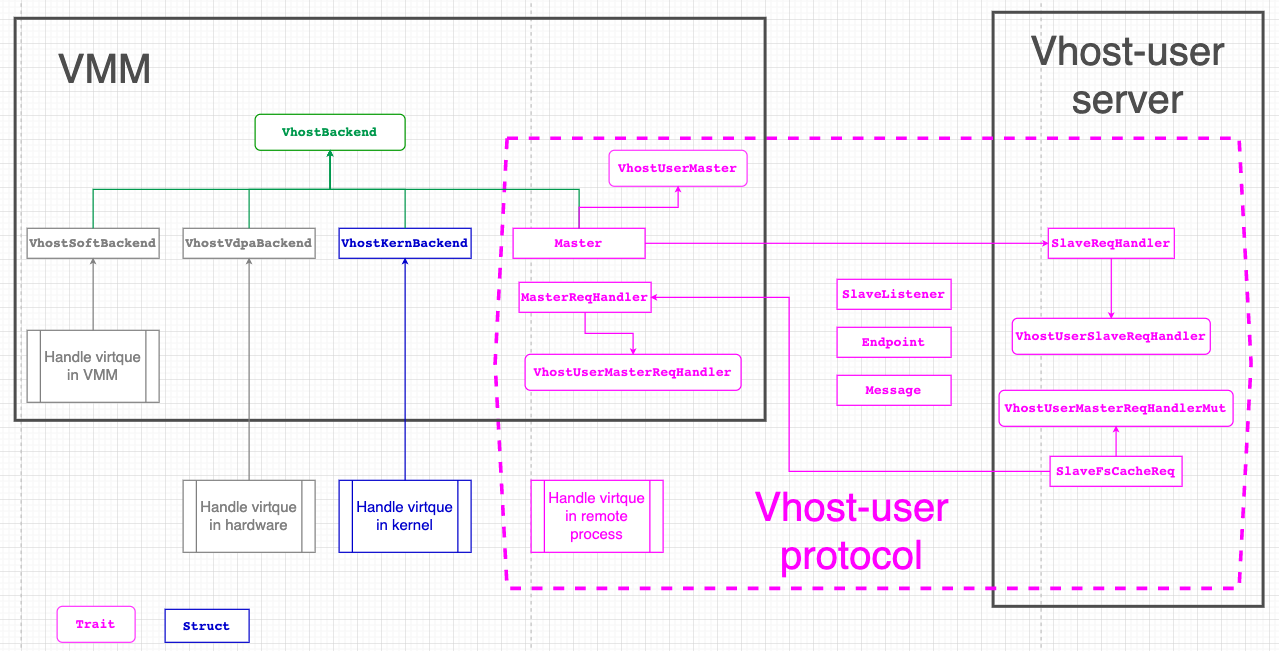Move rust-vmm/vhost code from chromiumos's third_party directory to crosvm's one. Note that we have crrev.com/c/3269863 for license files in Chrome OS ebuild. Changes: * Copied vmm_vhost files at "7c95b4a2 rust-vmm/vhost: switch to upstream tempfile", whose latest upstream commit is "488b3adc fix warning: unaligned_references". * Remove [patch.crates-io] section from its Cargo.toml. * Add attributes to skip `clippy::bool_assert_comparison` and `clippy::needless_borrow`, which will be fixed in following CLs. * Update crosvm's Cargo.toml and tools/chromeos/setup_cargo BUG=b:205511695 TEST=tools/chromeos/setup_cargo && cargo build Change-Id: Icee201b39ff1d352df59469a6c8668fc7cb92ab9 Reviewed-on: https://chromium-review.googlesource.com/c/chromiumos/platform/crosvm/+/3267912 Tested-by: kokoro <noreply+kokoro@google.com> Commit-Queue: Keiichi Watanabe <keiichiw@chromium.org> Reviewed-by: Dennis Kempin <denniskempin@google.com>
1.8 KiB
vHost
A pure rust library for vDPA, vhost and vhost-user.
The vhost crate aims to help implementing dataplane for virtio backend drivers. It supports three different types of dataplane drivers:
- vhost: the dataplane is implemented by linux kernel
- vhost-user: the dataplane is implemented by dedicated vhost-user servers
- vDPA(vhost DataPath Accelerator): the dataplane is implemented by hardwares
The main relationship among Traits and Structs exported by the vhost crate is as below:
Kernel-based vHost Backend Drivers
The vhost drivers in Linux provide in-kernel virtio device emulation. Normally the hypervisor userspace process emulates I/O accesses from the guest. Vhost puts virtio emulation code into the kernel, taking hypervisor userspace out of the picture. This allows device emulation code to directly call into kernel subsystems instead of performing system calls from userspace. The hypervisor relies on ioctl based interfaces to control those in-kernel vhost drivers, such as vhost-net, vhost-scsi and vhost-vsock etc.
vHost-user Backend Drivers
The vhost-user protocol aims to implement vhost backend drivers in userspace, which complements the ioctl interface used to control the vhost implementation in the Linux kernel. It implements the control plane needed to establish virtqueue sharing with a user space process on the same host. It uses communication over a Unix domain socket to share file descriptors in the ancillary data of the message.
The protocol defines two sides of the communication, master and slave. Master is the application that shares its virtqueues, slave is the consumer of the virtqueues. Master and slave can be either a client (i.e. connecting) or server (listening) in the socket communication.
